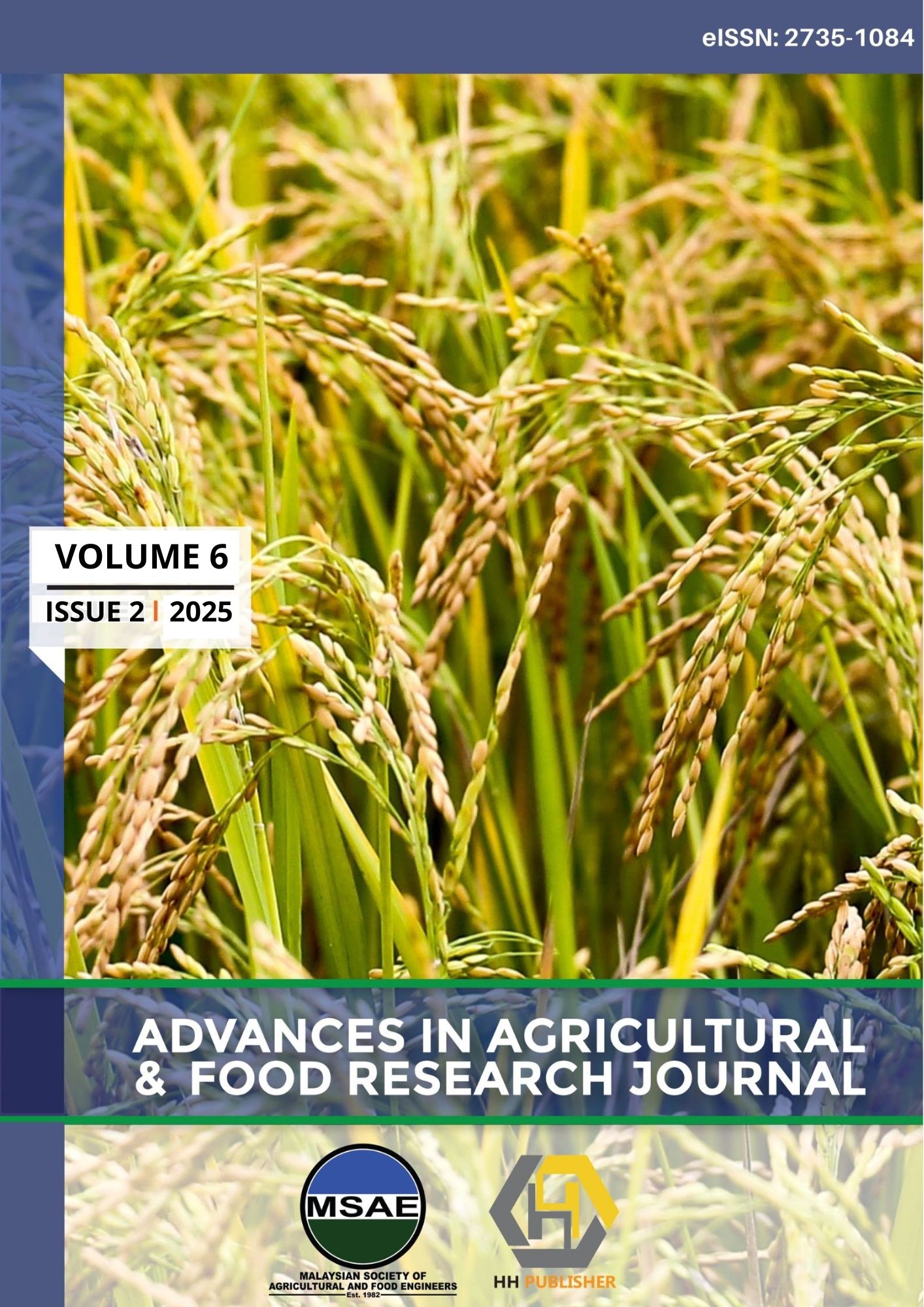Production of Spray Dried Tomato Powder from Enzymatic Liquefied Juice
DOI:
https://doi.org/10.36877/aafrj.a0000565Abstract
This study aimed to produce spray-dried tomato powder with improved product yield and powder quality. The experiment for this investigation entailed the use of two carrier agents which were maltodextrin (MD) dextrose equivalent (DE) 20 and gum Arabic (GA) from acacia tree G9752, each at 10% concentration. The carrier agents were combined and mixed with three different enzymes, alpha-amylase from porcine pancreas (AAPP) A6255, pectinase from Aspergillus aculeatus (PAA) P2611, and pectinase from Aspergillus niger (PAN) P4716, each at 1% v/w concentration. This study was conducted by altering the spray drying inlet temperatures to 140oC, 160oC, and 180oC separately. The physicochemical analysis of the tomato powder samples was conducted on the moisture content, powder yield, hygroscopicity, colour features, and 2,2-diphenil-1-picrylhydrazyl (DPPH) radical scavenging activity (RSA). The powder analysis conducted presented the moisture content of 1.30%-7.00%, colour analysis indices of * at 1.31–5.72, * at 7.5–9.8, * at 89.6–95.39, the production yield of 27.73%–42.65%, hygroscopicity value at 1.05%-6.79%, and antioxidant activity value of 9.51 mg/mL–28.81 mg/mL. Results indicated that sample TP9 was the best powder produced with output analysis of moisture content percentage of 1.3%, colour analysis * value of 3.14, production yield 42.65%, hygroscopicity 1.05%, and antioxidant activity value of 11.94 mg/mL. The study revealed that at higher inlet temperatures and in combination with enzyme PAN it is possible to produce powder characteristics with low moisture content, high * colour index, high production yield, low hygroscopicity value, and high antioxidant activity.
Downloads
Published
How to Cite
Issue
Section
License
Copyright (c) 2025 S M Anisuzzaman, Nur Aisyah Nordin, Collin G. Joseph

This work is licensed under a Creative Commons Attribution-NonCommercial 4.0 International License.
Author(s) shall retain the copyright of their work and grant the Journal/Publisher right for the first publication with the work simultaneously licensed under:
Creative Commons Attribution-NonCommercial 4.0 International (CC BY-NC 4.0). This license allows for the copying, distribution and transmission of the work, provided the correct attribution of the original creator is stated. Adaptation and remixing are also permitted.

This broad license intends to facilitate free access to, as well as the unrestricted reuse of, original works of all types for non-commercial purposes.
The author(s) permits HH Publisher to publish this article that has not been submitted elsewhere.

.png)

.jpg)



